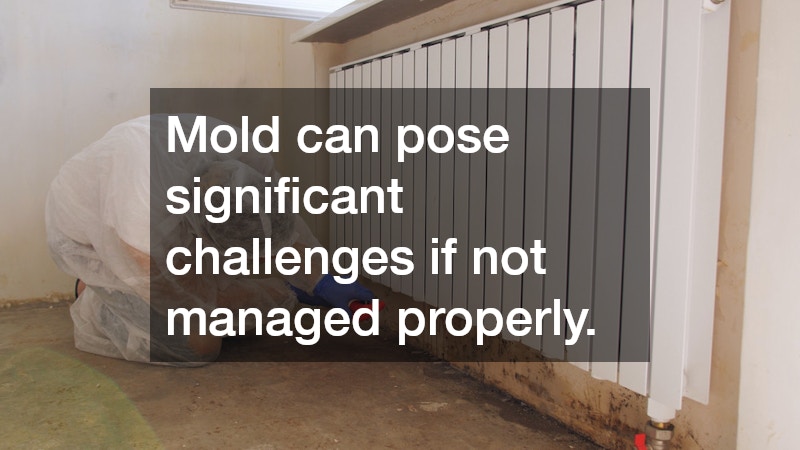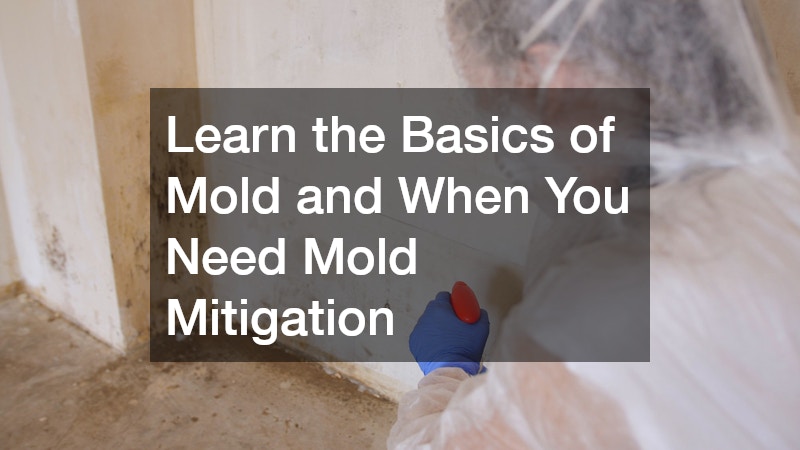Understanding the implications of mold in your environment and when to consider professional mold mitigation is crucial for maintaining a healthy living space. This article will guide you through the basics of mold and provide insights into managing potential problems.
What Causes Mold to Grow Indoors?
Environmental Factors
Mold thrives in conditions where moisture, warmth, and darkness are prevalent. Locations with high humidity levels, such as bathrooms and basements, are particularly susceptible to mold growth.
Poor ventilation can exacerbate mold growth by trapping moisture indoors. Maintaining an indoor humidity level below 60% is essential in preventing mold.
In addition to humidity and poor ventilation, temperature also plays a role; mold typically flourishes between 77°F and 86°F. By controlling these environmental factors, you can significantly reduce the risk of mold development in your home.
Common Indoor Sources
Mold can often be traced back to common household scenarios, such as water leaks, which provide an ideal breeding ground for its spores. If left unaddressed, these leaks can lead to significant mold infestations.
Other everyday materials, such as wood, drywall, and carpeting, are also prone to holding moisture, which can contribute to mold proliferation. Regular home maintenance can mitigate such risks by eliminating potential water sources.
Condensation from cooking and hot showers in kitchens and bathrooms can create a perfect environment for mold. Proper ventilation and regular cleaning can deter mold growth in these areas.
What Are the Health Risks Associated with Mold Exposure?
Immediate Health Effects
Short-term exposure to mold can lead to symptoms such as coughing, sneezing, and skin irritation. Individuals with asthma might experience exacerbated symptoms due to mold exposure.
Eye and throat irritation are common immediate effects after being in a mold-infested environment. These symptoms can be particularly distressing for individuals with existing respiratory conditions.
Although these symptoms are generally mild, they indicate the need for prompt action to address mold at its source. In sensitive individuals, even brief exposure can lead to more severe health concerns.
Long-term Health Concerns
Content on frequent mold exposure raises its potential to cause more serious health issues over time, such as chronic respiratory problems. Consistent exposure can also lead to a weakened immune system, making one more susceptible to infections and illnesses.
Documentation has shown that mold exposure can contribute to the development of asthma in children. Additionally, some molds produce mycotoxins, which have been linked to neurological effects and other severe health issues.
While the full extent of mold’s impact on health is still being studied, it is clear that mitigating mold exposure is critical for long-term well-being. Addressing mold problems early on is vital in safeguarding health over time.
How Can You Identify Mold in Your Home?
Visible Signs of Mold
Visible mold often appears as discoloration on walls or ceilings in shades of black, green, or white. These patches can vary in size and may be mistaken for dirt or soot.
A musty odor is another common indication of mold, even when it isn’t immediately visible. This smell often emanates from hidden mold within walls or under carpets.
Water stains or discoloration around pipes and fixtures can signal the presence of mold. Regular inspection of these areas can help in the early detection of mold problems.
Mold Detection Techniques
DIY methods for mold detection include using mold test kits available at hardware stores. These kits can give a preliminary indication of mold levels, but may not be as reliable as professional testing.
Professional mold inspection services use advanced techniques such as infrared imaging and air quality tests to identify mold presence. These methods are particularly effective for detecting hidden mold issues.
Regardless of the method chosen, accurate detection is the first step toward effective mold mitigation. Consulting with experts can provide a more thorough assessment of mold problems in your home.
When Should You Consider Professional Mold Mitigation Services?
Signs of Severe Infestation
Large mold infestations, typically covering an area greater than 10 square feet, warrant professional intervention. Such infestations can deeply penetrate building materials, making them difficult to eradicate without authority help.
Persistent mold problems, despite efforts to clean and prevent them, may also indicate the need for authority services. Recurring issues suggest underlying problems that only professionals can correctly address.
Visible mold combined with widespread water damage is another clear indication of the need for professional services. Professionals have the tools and skills necessary to assess and remediate such complex situations thoroughly.
Benefits of Professional Services
Hiring professional mold mitigation services ensures a thorough and effective remediation process. These professionals are trained to find the root cause of mold and provide solutions to prevent future occurrences.
Professional services offer peace of mind, as they handle the cleanup safely, minimizing health risks. With their experience, professionals can also offer guidance on preventive measures to keep mold at bay in the future.
Additionally, professionals adhere to industry standards, making sure that mold removal complies with safety regulations. This adherence not only protects the home’s inhabitants but also maintains property value.
Mold can pose significant challenges if not managed properly. By understanding its causes, health risks, detection methods, and when to seek professional help, you can maintain a healthier indoor environment.
Taking proactive measures to control the conditions that promote mold growth is essential. With the right information and timely interventions, the risks mold poses to health and home can be effectively mitigated.



